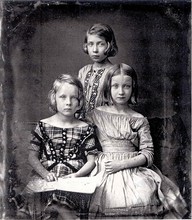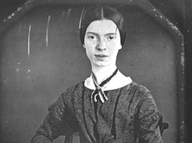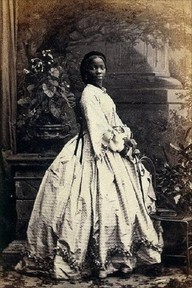Have you ever wondered why almost no one smiles in old-fashioned photographs?
In 1839, Louis-Jacques-Mandé Daguerre invented a way to create a permanent image, using a camera. The first daguerreotypes required the subject to remain still for fifteen to thirty minutes. By 1842, the exposure time was down to about 60 seconds.
Try maintaining a smile for sixty seconds. Now do you see why so few people smiled?
By the late 1850s, daguerreotypes were replaced with a faster and less expensive photographic process. Why did people continue not to smile? They still had to stay completely motionless so the picture didn’t blur. And possibly, they didn’t want to smile because most people did not have very nice teeth.
As photography became more popular over the course of the 19th century, many people opted to take pictures of loved ones who had recently died. These memento moris, or post-mortem photos, can be haunting and bewildering to those of us who look at them today. I would have posted an example, but I find most of them too heartbreaking, especially when it’s a parent holding his or her dead child, or a living sibling next to a dead one. And yet, as a mother, I kind of get it. The weirdest ones show the dead person propped up in a standing position, surrounded by living family members. If you are really curious, you can see an example here. But I warn you, it’s pretty creepy.
A few other cool photos:



